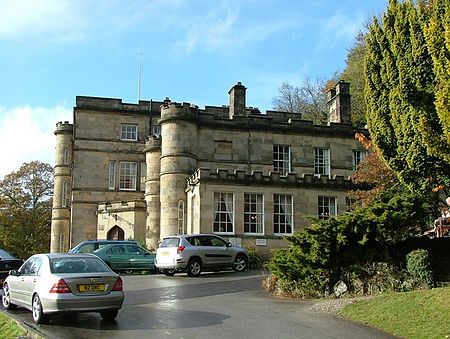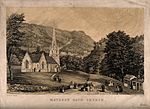Willersley Castle
Country houses in DerbyshireGrade II* listed buildings in Derbyshire

Willersley Castle is a late 18th-century country mansion above the River Derwent at Cromford, Derbyshire, outside Peak District National Park. The castle has been a Grade II* listed building since April 2000.Standing in 60 acres (240,000 m2) of grounds, the Classical-style castellated house is three storeys with a seven-bay frontage, the central bay flanked by full-height round towers. In recent years, the property operated as a hotel but was permanently closed and listed for sale in summer 2020.
Excerpt from the Wikipedia article Willersley Castle (License: CC BY-SA 3.0, Authors, Images).Willersley Castle
Mill Road, Derbyshire Dales
Geographical coordinates (GPS) Address Nearby Places Show on map
Geographical coordinates (GPS)
| Latitude | Longitude |
|---|---|
| N 53.111111111111 ° | E -1.5583333333333 ° |
Address
Mill Road
DE4 3QE Derbyshire Dales
England, United Kingdom
Open on Google Maps









